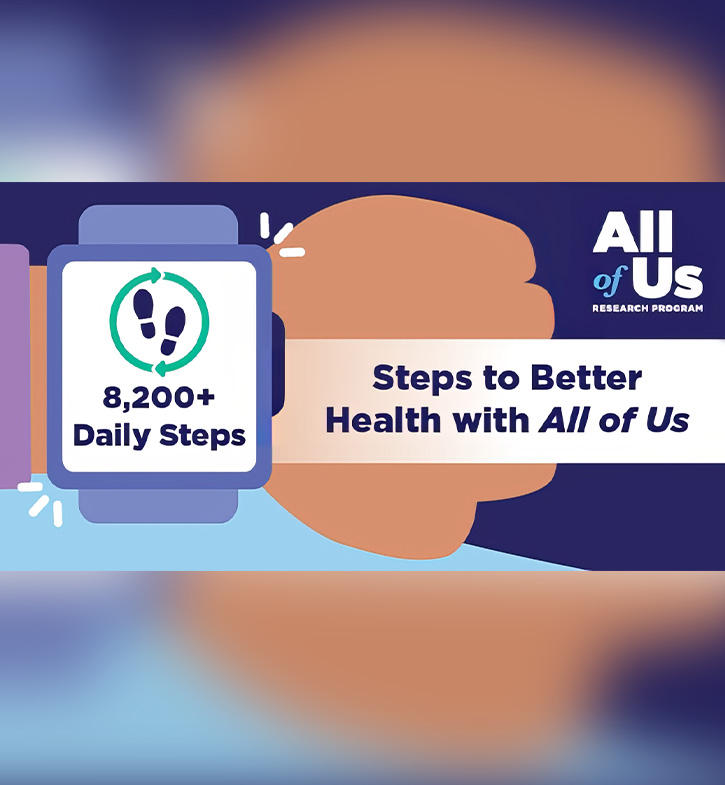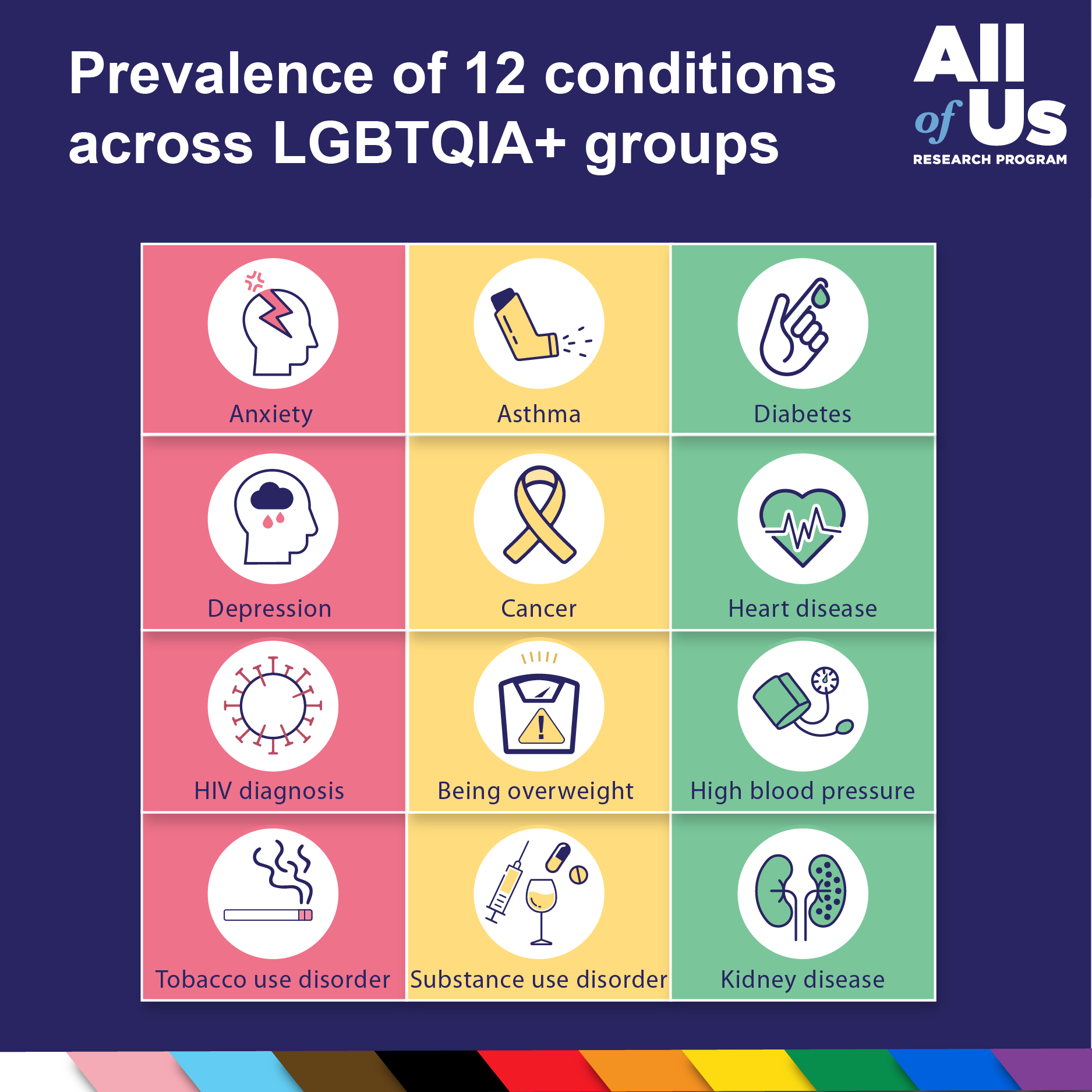
Key points
- Researchers looked at All of Us data to learn how 12 common health conditions affect LGBTQIA+ adults.
- Anxiety, depression, HIV diagnosis, and tobacco use disorder were more common in LGBTQIA+ adults than in non-LGBTQIA+ adults.
- Diabetes, heart disease, high blood pressure, and kidney disease were less common in LGBTQIA+ adults.
- Thanks to All of Us participants, researchers can learn more about the health of LGBTQIA+ adults.
Data from more than 410,000 All of Us participants is now available for research. Researchers can use this data, including medical records and survey responses, to study health and disease in historically understudied groups. For example, All of Us participants have shared details about their gender identity and sexual orientation. Researchers can use this information to learn more about the health of LGBTQIA+ adults.
A new study looked at All of Us data to learn how 12 health conditions affect LGBTQIA+ adults.
Anxiety, depression, HIV diagnosis, and tobacco use disorder were more common in LGBTQIA+ participants than in non-LGBTQIA+ participants.
Rates of asthma, being overweight, cancer, and substance use disorder varied among the LGBTQIA+ groups. In some LGBTQIA+ groups, these conditions were more common than in non-LGBTQIA+ participants; in others, they were less common.
Diabetes, heart disease, high blood pressure, and kidney disease were less common in LGBTQIA+ participants than in non-LGBTQIA+ participants.
The results were published in JAMA Network Open.
All of Us Includes Gender Identity and Sexual Orientation
When studying health conditions, researchers do not always ask participants to report their gender identity, sex assigned at birth, and sexual orientation. That is one reason why there are gaps in what we know about the health of LGBTQIA+ people.
This new study suggests that researchers can use All of Us data to learn more about the health of LGBTQIA+ people and the health inequities they face.
The study included data from about 30,000 LGBTQIA+ All of Us participants and about 316,000 non-LGBTQIA+ participants.
The LGBTQIA+ groups included participants who self-identified in All of Us surveys as any of the following:
- Asexual
- Bisexual
- Gay
- Lesbian
- Nonbinary
- Queer
- Pansexual
- Transgender
- Two-spirit
(The current survey questions do not clearly identify intersex participants, so there were not enough intersex participants to include in this analysis.)
Researchers then analyzed the LGBTQIA+ and non-LGBTQIA+ groups’ electronic health record data and height and weight data to see how 12 common health conditions affected these groups.
Paving the Way for Future LGBTQIA+ Research
This study paves the way for future research about LGBTQIA+ health. The study did not look for the reasons why LGBTQIA+ groups face health inequities. Reasons could include experiences with discrimination, lack of access to health care, and other social factors.
New studies can use All of Us data to pinpoint why there are health differences between non-LGBTQIA+ and LGBTQIA+ people. The data can also help researchers look more closely at the different experiences among LGBTQIA+ groups, since health patterns can differ by group.
All of Us data can help researchers find answers about the health of LGBTQIA+ people. This is possible because of the size and diversity of the program’s participant population and the variety of data participants share. As more studies on LGBTQIA+ health become available, health care providers can improve personalized care for their LGBTQIA+ patients.
Interested in All of Us?
- Read more research highlights.
- Learn about participation in the program.
Conduct research with All of Us
- Learn about opportunities for researchers.
- Find funding to support research using All of Us data.
- See more research projects made possible by All of Us data and tools.


